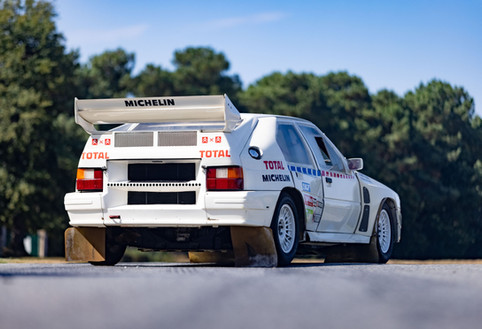1986 Citroën BX 4TC Evolution
- Sep 17, 2022
- 2 min read
Images Courtesy of Artcurial Auction House
With the Visa 1000 Pistes, Citroën successfully won the World Rally Championship's junior category. In October 1985, the French manufacturer announced its intention to compete for outright victories with a newly developed Group B version of the BX road car. Among its chief rivals would be its sister company, Peugeot. Still, there would be no synergy benefits Citroën Competitions decided to go alone and design a new engine and car from scratch.
Bucking the trend of mid-engined machinery raced with great success by Peugeot and Lancia, the ever-quirky company decided to take a page out of Audi's book instead. Known as the BX 4TC, the new Group B featured a four-cylinder engine mounted ahead of the front axle and drove all four wheels through a five-speed manual gearbox. The engine used was a revised version of the Peugeot 505 Turbo unit, which was good for around 380 hp. Very much a Citroën, the BX 4TC also featured the company's famous hydro-pneumatic suspension system. Due to the location of the engine, the car had unusual proportions with a relatively long front overhang.
For the BX 4TC to compete in the World Rally Championship, it had to be homologated. This required Citroën to produce 200 road-going copies. Similar to the actual rally cars, the road-legal versions had a detuned engine rated at around 200 hp. These were built in time for the BX 4TC 'Evolution' Group B racer to receive the green light before the start of the 1986 season. While Citroën did make the required numbers, the French company struggled to find buyers for them, and it is believed only 86 were ever sold to private buyers.
The BX4 TC debuted at the Rallye Monte Carlo, with examples for Frenchmen Jean-Claude Andruet and Philippe Wambergue. Both drivers retired but not before Andruet had clocked consistent top-ten stage times. He then finished sixth in Rally Sweden, scoring ten points for Citroën. The BX4 TC made only one more World Rally Championship appearance; in Greece, where three cars were entered. All three retired, and shortly after that, Group B was canceled. A BX 4TC raced in the French national championship but would not run in the WRC again.
With a single sixth-place finish, the BX 4TC is often described as the worst of all Group B cars. It lacked proper development and was underpowered and too heavy compared to the Lancia Delta S4 and Peugeot 205. Out of embarrassment, Citroën reportedly set about actively buying the homologation specials in private hands and then destroyed the vast majority. Of the 20 'Evolution' models, it is believed that as many as 16 also suffered a similar fate. As a result, the BX 4TC may not only be the worst but could also be the rarest of all Group B cars.
Source: Ultimate Car Page

%20(4)_edited.png)


















































































Comments